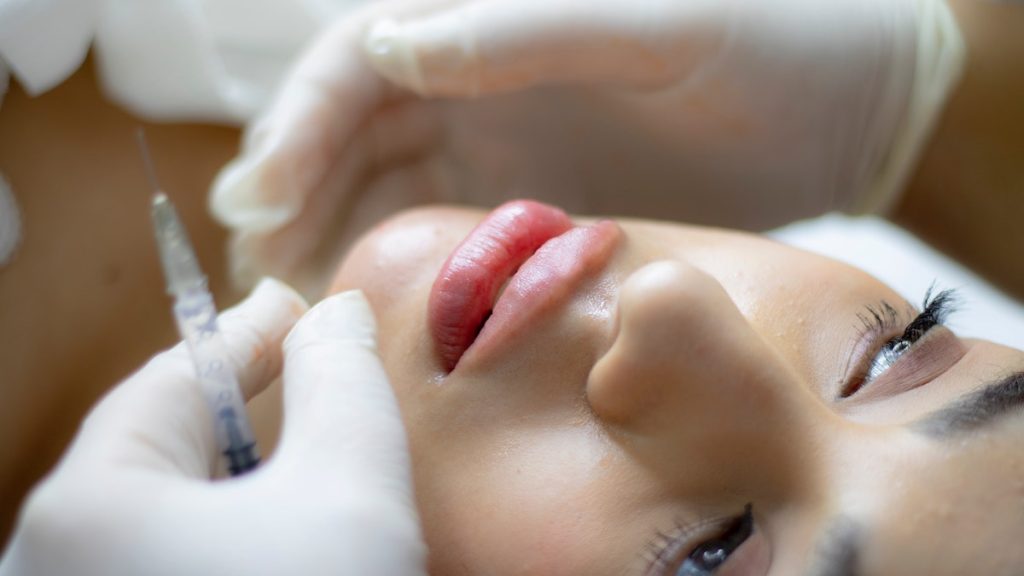When most people hear the word “filler,” they immediately think of Kylie Jenner-esque lips. Although lip fillers are part of the dermal filler vocabulary, they do more than just give you plump lips. Dermal fillers enhance different areas of your face. It can strengthen chins, enhance cheekbones, sharpen your jawline and restore volume to your face.
For some people, botox and fillers are the same. They’re not. Unlike botulinum toxins like Dysport or Botox, fillers do not impact muscle motion. Instead, fillers smooth out fine lines and restore fullness to the skin.
For example, if you want to speed up your makeup routine by removing the need for concealing the dark bags under your eyes, under-eye fillers make a big difference. Just check the under-eye filler before and after photos; regular sessions improve darkness or hollowing under the eyes. Under-eye fillers can also give your eyebrow area a subtle lift, which gives you a refreshed appearance.
Apart from their versatility, dermal fillers balance and sculpt your face. They can also improve the appearance of scars, soften facial creases and wrinkles and provide you with gratifying and long-lasting results.
So if you wish to enhance your facial aesthetics, fillers are a good way to do so. For most people, however, the word “fillers” automatically leads them to lip fillers: the before and after results and looking like Kylie Jenner.
However, you have other filler options available! Consider the following:
Under-Eye Filler: Before and After and The Basics

If you have dark circles under your eyes, you may have tried applying brightening cream every night or piling up on concealer before you go out. While both options can somehow refresh your tired-looking under eyes (“somehow” because they aren’t always 100 percent effective), the best way to freshen up your eyes is to get an under-eye filler.
Getting an under-eye filler makes a big difference before and after. It is one of the few methods that can actually improve your appearance, depending on the cause of your dark circles.
But before you pursue an under-eye filler procedure, it’s important to know how it works, what you can expect and the results.
What is Under-Eye Filler?
Under-eye fillers are a non-surgical procedure that involves the injection of a fluid that contains a base of hyaluronic acid. Aestheticians directly inject the filler into the under-eye area to improve the appearance of discolored or sunken under-eye areas.
If you are considering getting under-eye fillers, be realistic with your expectations. While an under-eye filler has great before and after results, it’s not a permanent fix. You’ll need follow-up procedures every six to 18 months if you want to maintain your look.
What to Expect During an Under-Eye Filler Treatment?
Under-eye filler procedures do not hurt as much as other invasive cosmetic procedures. Before the treatment, your cosmetic surgeon will apply a topical anesthetic to numb the area. It takes 15 minutes for the numbing cream to work. The doctor will then inject your under-eye with fillers. In total, the entire treatment takes anywhere from 15 to 30 minutes.
The numbing cream makes the pain quite manageable. All you’ll feel is a weird sensation of pressure by the orbital bone, but that’s it.
What are the Side Effects?
Swelling and bruising are the most common side effects associated with under-eye fillers. If you experience both or either, they should last for a day or two. Avoid exercise or positioning your head below your waist for 24 hours to reduce the bruising and swelling.
While extreme bruising isn’t the norm, it can happen. Excessive bruising is more difficult to conceal and requires up to 10 days for recovery.
How Long Do Under-Eye Fillers Last?
Hyaluronic acid under-eye fillers can last from nine months to one year. But if your cosmetic surgeon injects calcium hydroxylapatite, the effect can result from 12 months to 18 months. Under-eye fillers with Poly-L-lactic acid last longer. They can last for more than two years.
Cheek Fillers: Before And After and the Basics

If you’re uncomfortable about having low cheekbones, fillers can also save the day. Cheek fillers guarantee a noticeable before and after result. Even though these filters aren’t as common as lip fillers, chances are you probably know someone who has gotten the procedure.
There’s plenty of information on the internet concerning cheek fillers — some people wonder if they’re the same as cheek implants, how long they would last and more.
Here’s what you need to know about cheek fillers: the before and after results, how the treatment works and more.
What are Cheek Fillers?
Cheek fillers are cosmetic injections that increase the volume of the area around and above your cheekbones. This gives you a more defined bone structure. By injecting fillers under your cheek’s skin layer, the fillers will smooth out fine lines and wrinkles.
What to Expect During a Cheek Fillers Treatment?
Two weeks before your procedure, your cosmetic surgeon will discourage taking any blood-thinning medication (e.g. aspirin). If you’re currently taking blood thinners, inform your doctor during the consultation.
During the procedure, your doctor will apply an anesthetic to the injection site. In some cases, the cheek filler contains a numbing agent, too. The injection process will only last for 20 minutes or less. Once the doctor has injected the fillers, you can see the results immediately.
After the procedure, avoid sleeping on your cheeks. Instead, sleep flat on your back, facing up. You may also want to avoid heavy exercises until the filler has already taken the shape of your lips. This usually takes place two days after the procedure.
What are the Side Effects?
Cheek fillers are low-risk. The process is straightforward and requires minimal recovery time. But like under-eye fillers, there are side effects. Common side effects of cheek fillers include:
- Itching
- Redness
- Bruising
- Swelling
How Long Do Cheek Fillers Last?
Some cheek fillers can last from six to 12 months, while others can last for years. It depends on the type of filler you’re using. Check in with your doctor to find a filler that lasts a decent amount of time while fitting your price point.
Chin Fillers: Before and After and the Basics

If you want to add shape and definition to your lower jawline and chin area, chin fillers are ideal for you. Many people are requesting this filler due to the growing popularity of facial contouring. With fillers, you can optimize your chin to create a definition in the lower part of your face. When injected with cheek fillers, you can achieve a lovely heart-shaped face.
What are Chin Fillers?
Similar to other dermal filler procedures, chin fillers use injectable dermal fillers to add shape and definition to your chin. Dermal fillers can be made from either synthetic or natural materials. The filler material can augment your chin, balancing your facial profile.
There are different types of chin fillers. If you want long-lasting results, go for synthetic fillers. Other filler materials, such as hyaluronic fillers, can be easily absorbed by the body over time.
What to Expect During a Chin Filler Treatment?
Chin filler injections are similar to the other dermal fillers mentioned above. Your cosmetic surgeon will provide the service in an outpatient setting and without downtime.
During the procedure, your provider will allow you to sit up while they inject the filler. They will ask you to sit still. Also, you may receive multiple injections in your jawline and chin area. Afterward, your doctor may require you to return for a follow-up visit and additional injections.
What are the Side Effects?
Minor swelling, bleeding and bruising are normal after you receive the treatment. You are more likely to experience these side effects if you have a bleeding disorder or take blood thinners.
Some of the less common side effects of chin fillers include:
- Allergic reactions
- Infections
- Sensitivity reactions
- Lumps, bumps or asymmetrical areas
How Long Do Chin Fillers Last?
Chin fillers can last anywhere from a year to five years, depending on the type of filler used, the depth of the filler’s placement and how fast your metabolism is.
No matter which filler option you choose, it’s important to talk to your doctor first before pursuing any dermal filler injection.


